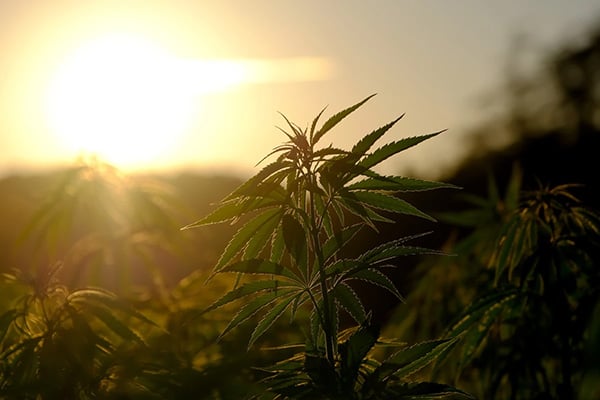
Reduce your carbon footprint | LOOKAH
How can the cannabis industry reduce its carbon footprint?
Growing cannabis sustainably is a real challenge, and as powerful companies buy up smaller growers, solving this pressing problem becomes increasingly difficult.
For thousands of years, marijuana has grown on its own, without human assistance or fossil fuels. Just as plants are naturally green, cannabis users are generally environmentally conscious citizens.
This can be seen in the often recycled or waste-free packaging that some cannabis brands now use.
So why is marijuana's carbon footprint increasing as the industry expands? The answer to this question lies in the way marijuana is grown today.
Heather Dunbar, director of marketing and communications for the nonprofit Sun+Earth Certified, said they are working to curb or even reverse the current problem of cannabis cultivation and fossil fuel use. Sun+Earth Certified growers grow in an inclusive, responsible and regenerative way. In other words, the goal is to improve the environment, not harm it.
But as the cannabis industry continues to become a major player in trade and industry, is it possible to return to climate-friendly methods of growing marijuana?
Or will cannabis cultivation become a major consumer of fossil fuels as the industry grows?
Take advantage of the sun – it’s free.
One of the biggest factors in the carbon footprint of cannabis cultivation is the way the plants get their light to grow. Like all plants, cannabis needs light to grow. However, only a small portion of the U.S. crop is grown outdoors, where the natural light of the sun is used. Politico said that in the U.S., “80 percent of marijuana is grown indoors, using modern lighting and environmental controls to maximize the plant's yield.”
Instead of using natural light, most companies use indoor cannabis cultivation facilities, which reduce the number of variables and provide higher yields, but at a higher financial and environmental cost.
While this approach may be good for the bank accounts of larger companies, it is not good for the environment. Even ignoring the cost of renting or purchasing suitable land, indoor industrial-scale grow facilities cost as much as $75 per square meter.
By comparison, greenhouse cultivation costs about $50 per square foot, while outdoor cultivation costs about $10 to $15 per square foot. This does not include the operating costs of such facilities, which include electric lighting systems, irrigation and air conditioning for indoor cultivation.
Only larger companies can afford the significant initial investment, but the facilities allow for 365-day-a-year cultivation, avoid many environmental problems such as pests and storms that can damage and destroy crops, and allow for customized environmental settings for any given variety.
Using sunlight instead of artificial light to provide nutrients to plants reduces dependence on electricity. Whether in an outdoor greenhouse or semi-open field, these regeneration methods avoid the high energy costs associated with intensive indoor cultivation.
However, it will not be easy to convince the large plantation owners who build huge indoor facilities that run like clockwork to harvest large quantities. Some restrictions come from laws to secure the harvest, others from the old mindset of illegal cultivation where activities take place in secret, and still others are based on controlling the growing conditions. A recognizable certificate on qualified products is a good step to enable consumers to choose environmentally friendly options.
Use environmentally friendly pesticides and materials.
Unregulated artificial pesticides are not only harmful to our bodies, these toxic pesticides are also harmful to the environment.
Synthetic pesticides and fertilizers have significant negative impacts. Avoiding these products can significantly reduce the carbon footprint of cannabis.
Fertilizer is also a way for cannabis growers to reduce their environmental footprint. Compost and homemade fertilizer are not only cheaper, but they also mean you don't have to buy fertilizer that has been trucked hundreds or thousands of miles. Some of the fertilizers available for purchase have harmful effects on the environment. Petrochemical pesticides and fertilizers not only have a negative impact on soil biology, but they also use a lot of fossil fuels. If growers made their own fertilizer or sourced fertilizer locally from the community, it could help save money and protect the environment.
Small sustainable farms are a great way to reduce your carbon footprint.
Smaller farms are better suited to achieving environmental stability. When these farms work together as a collective, they can share best practices, join forces, and work together to bridge the gap between farmers and consumers, spread the message about regenerative cannabis cultivation, and strengthen communities.
This concept of low-waste, renewable agriculture will also spread to other agricultural industries that want to do the right thing but don't know how.
While this may seem like a noble and optimistic plan, the time to implement these changes is clearly limited, especially as small marijuana farms continue to struggle. Farmers who have been doing the right thing for generations are finding it incredibly difficult to make ends meet. This is due to low profit margins that are causing farmers to close their operations.
The ultimate solution and the best of both worlds
It is probably a hybrid farming concept.
Mother plants and clones begin their life cycle indoors or in a state-of-the-art greenhouse. These plants can then be taken out of the nursery and placed in a standard greenhouse to continue the vegetative phase before being moved outside for the flowering process. This allows for controlled lighting inside and reduces the carbon footprint by using natural light to mature the plant.

Post a comment: